Rafter Sports app
Summary
Rafter Sports is a peer-to-peer sports content and betting platform designed around familiar video feed and social patterns, empowering users to share sports content, create bets, compete for rewards, and build community through competition.
Role
Lead UX Designer: Responsible for the end-to-end product design, from wireframes to final UI and the creation of a reusable design system. Collaborated with global teams across engineering, marketing, and leadership.
Final designs
Home feed
The core user experience: a vertically scrolling feed showing user posts, videos, and active bets. Designed to mirror familiar social apps and drive content discovery.
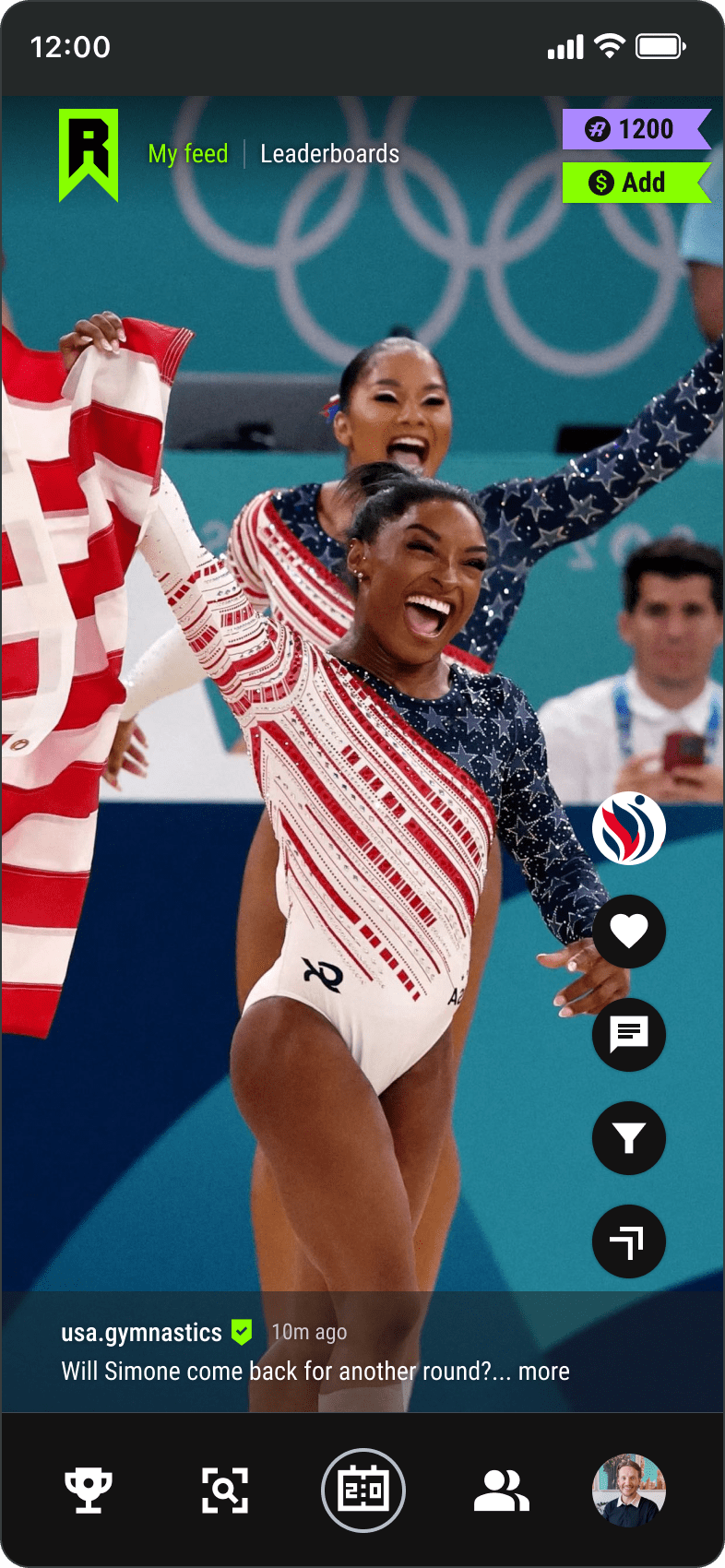
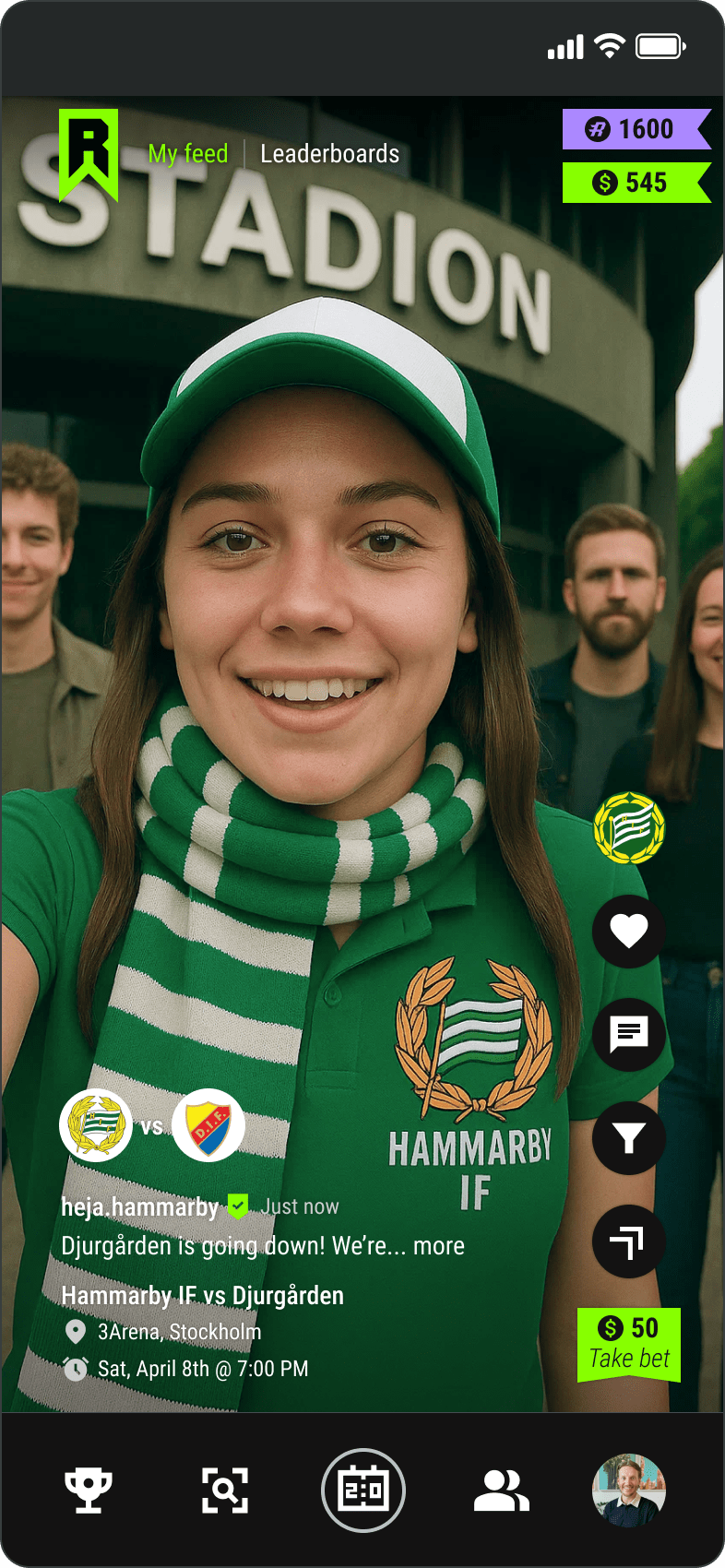
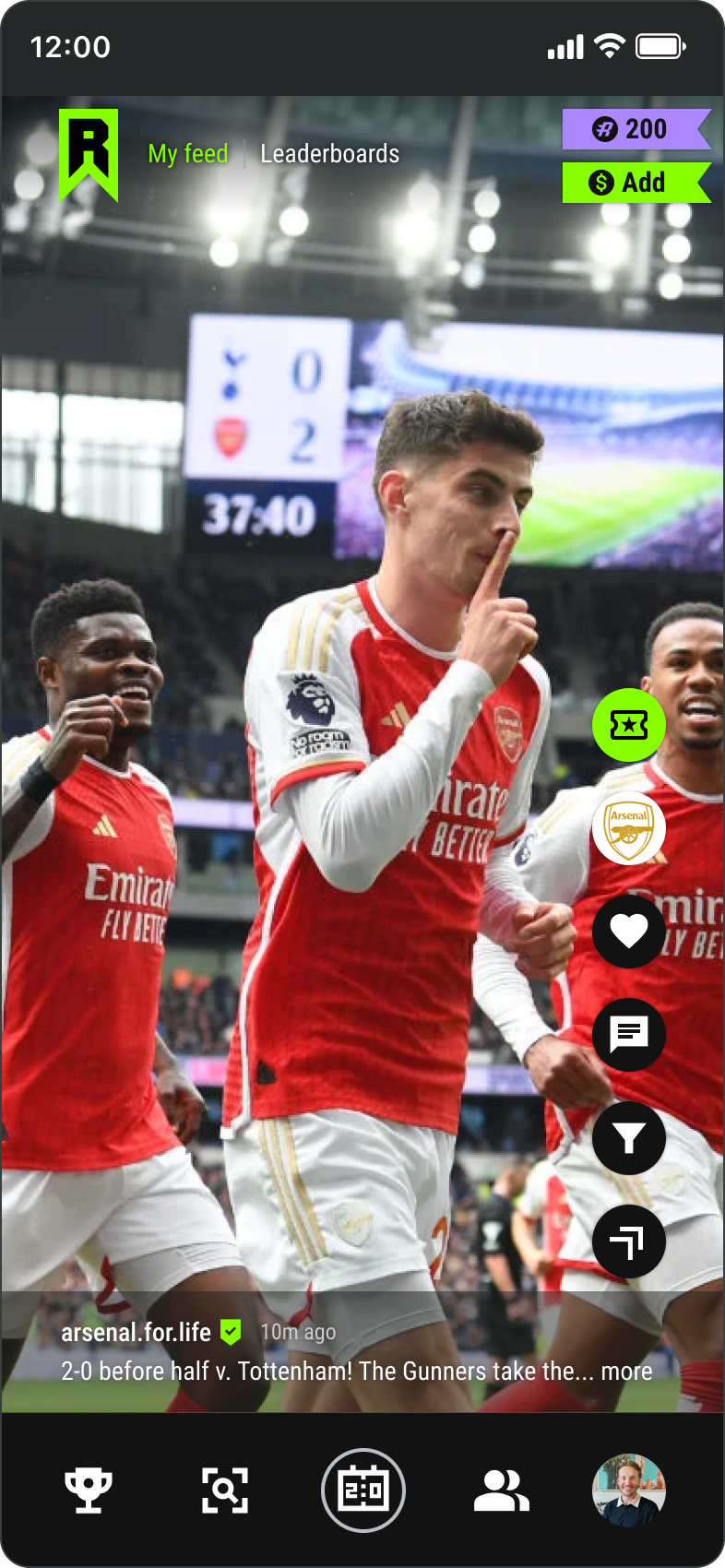
Walkthroughs
To reduce drop-off, we created optional tooltip-based walkthroughs that guides users through their first bet. The flow adapts to whether a user comes from a video, challenge, or match screen making the path smooth regardless of entry point.
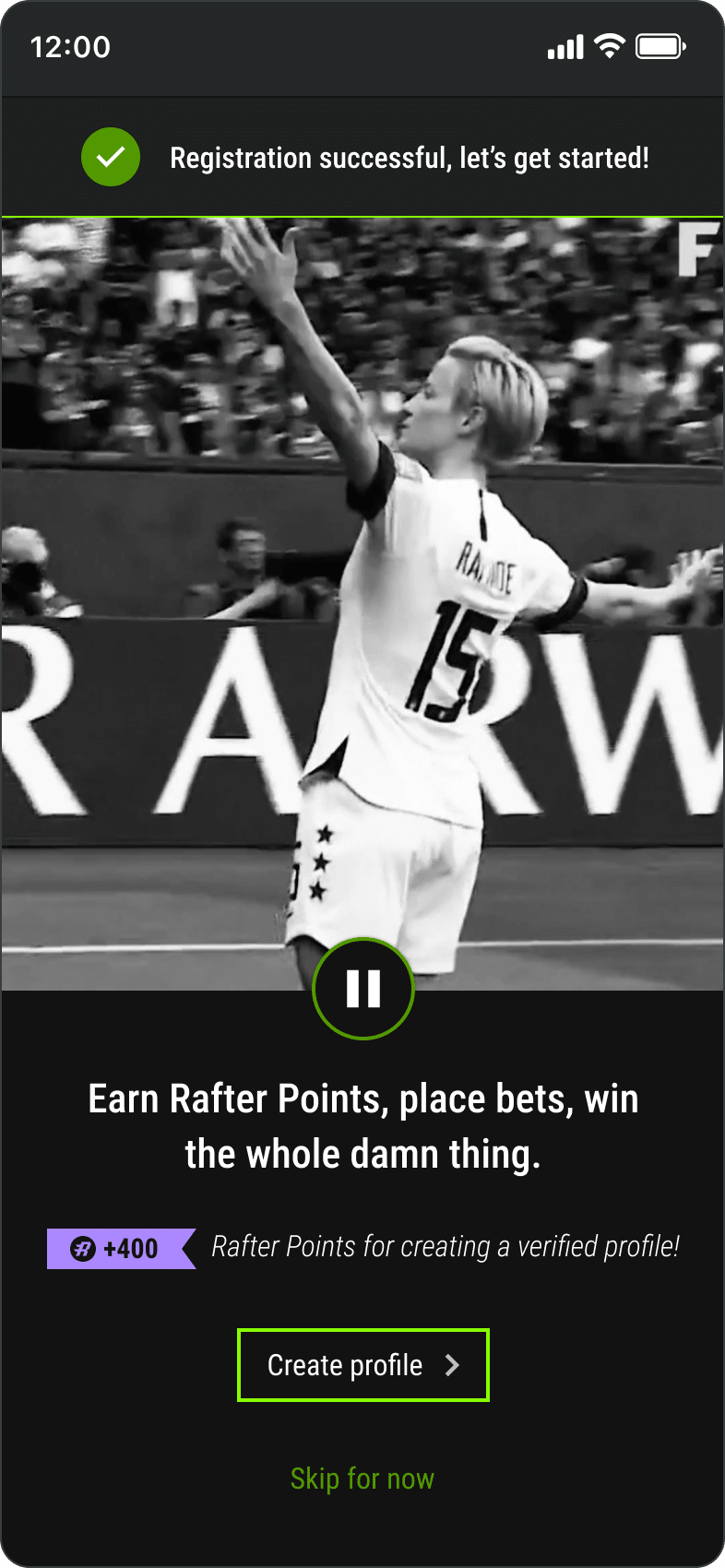
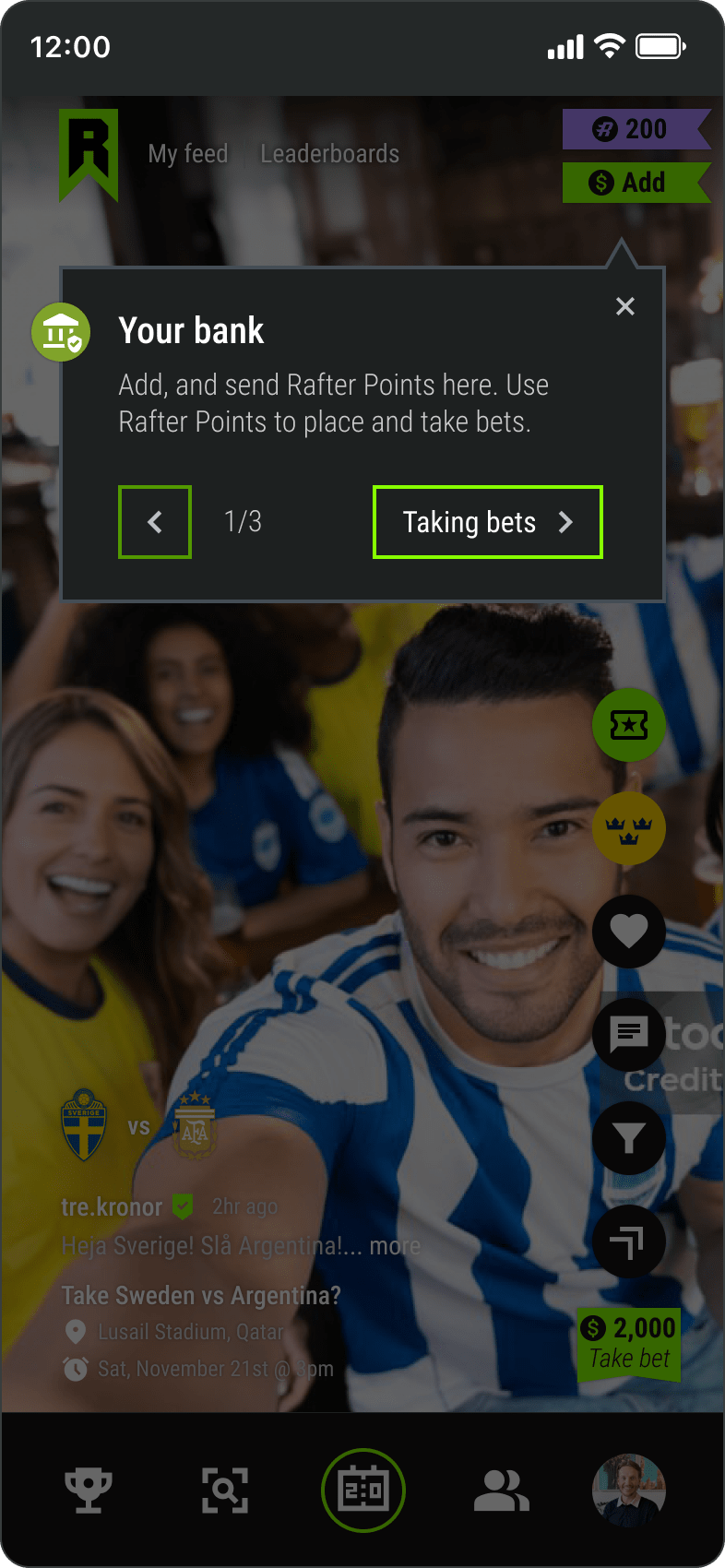
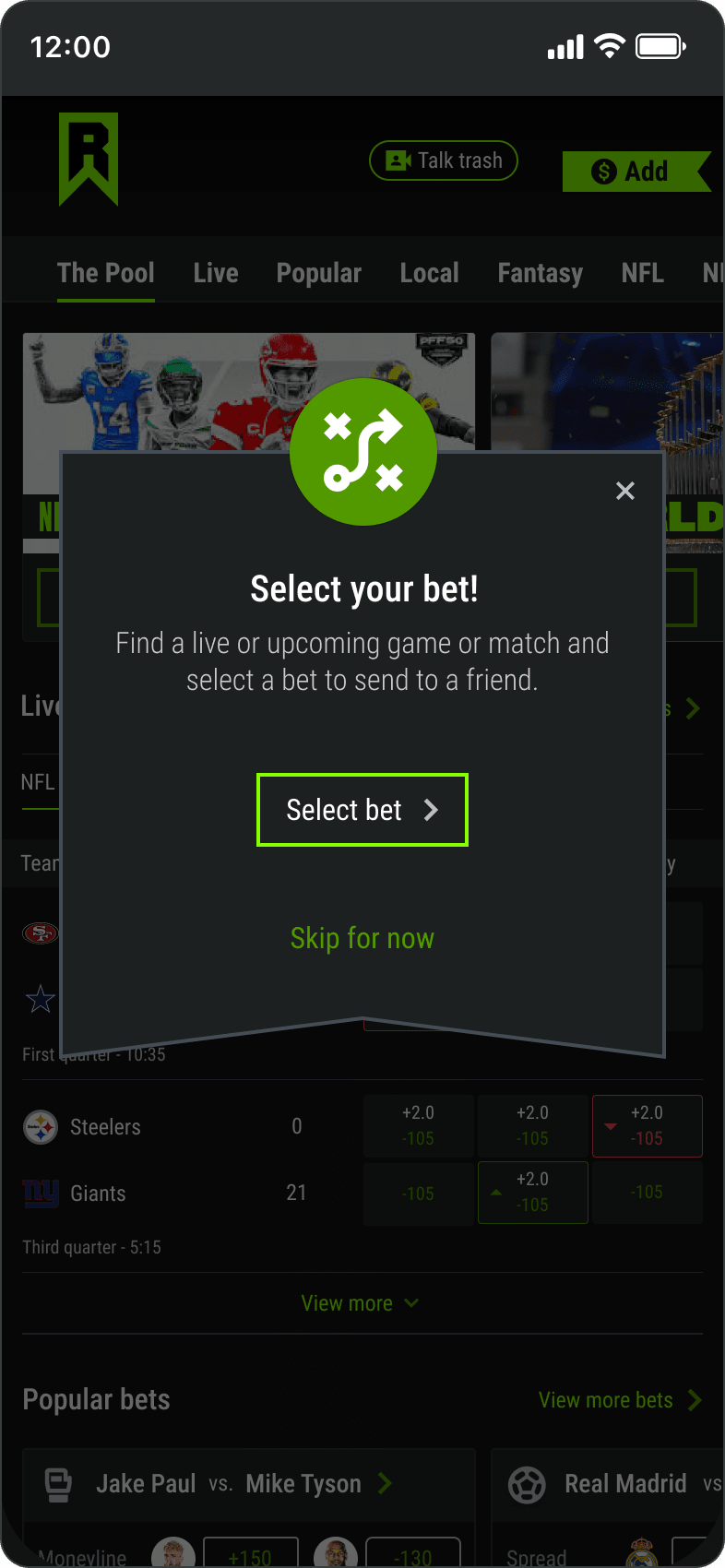
Games and matches
Match screens combine live stats, predictions, local bets, video posts, and chat which give users everything they need to follow and bet in one place. These features make betting more social and engaging, turning each game into a shared experience.
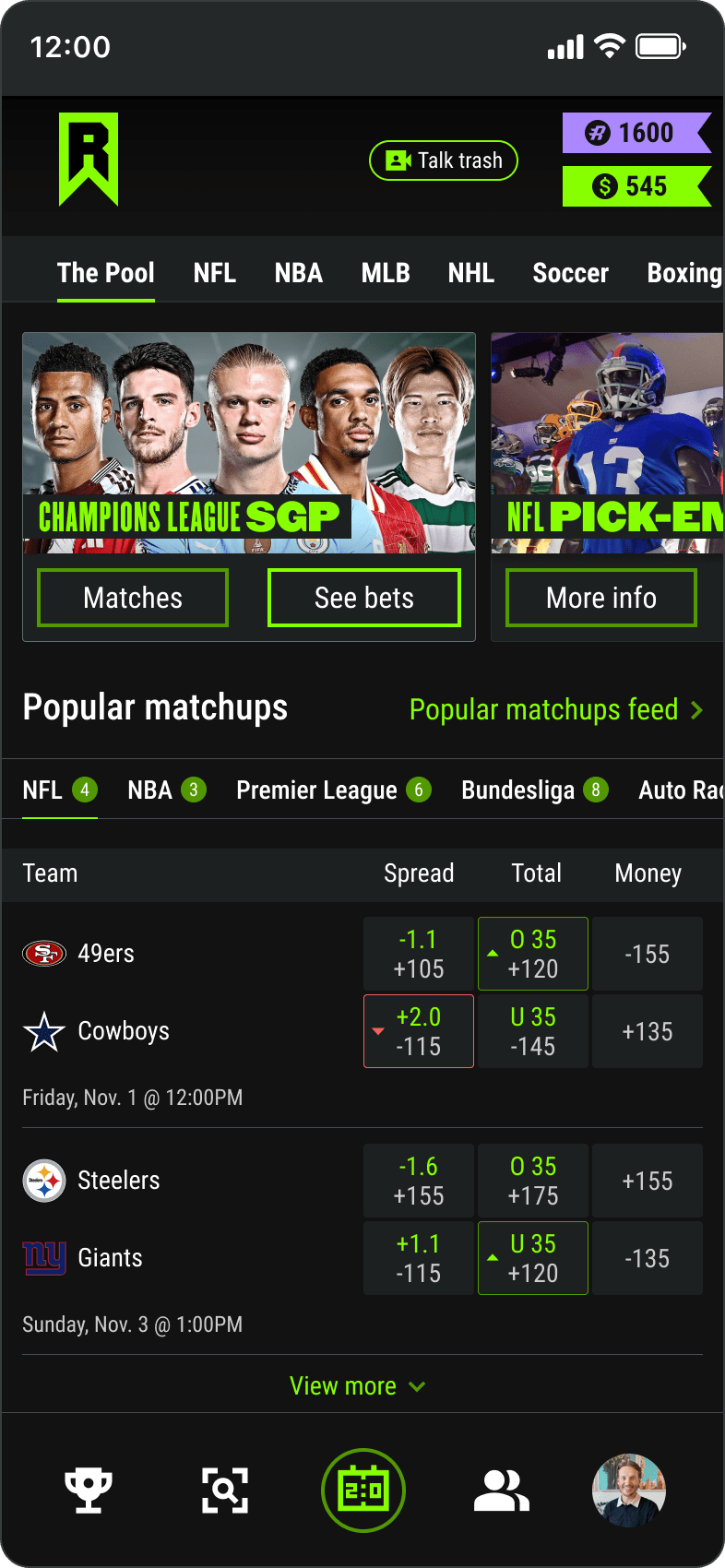
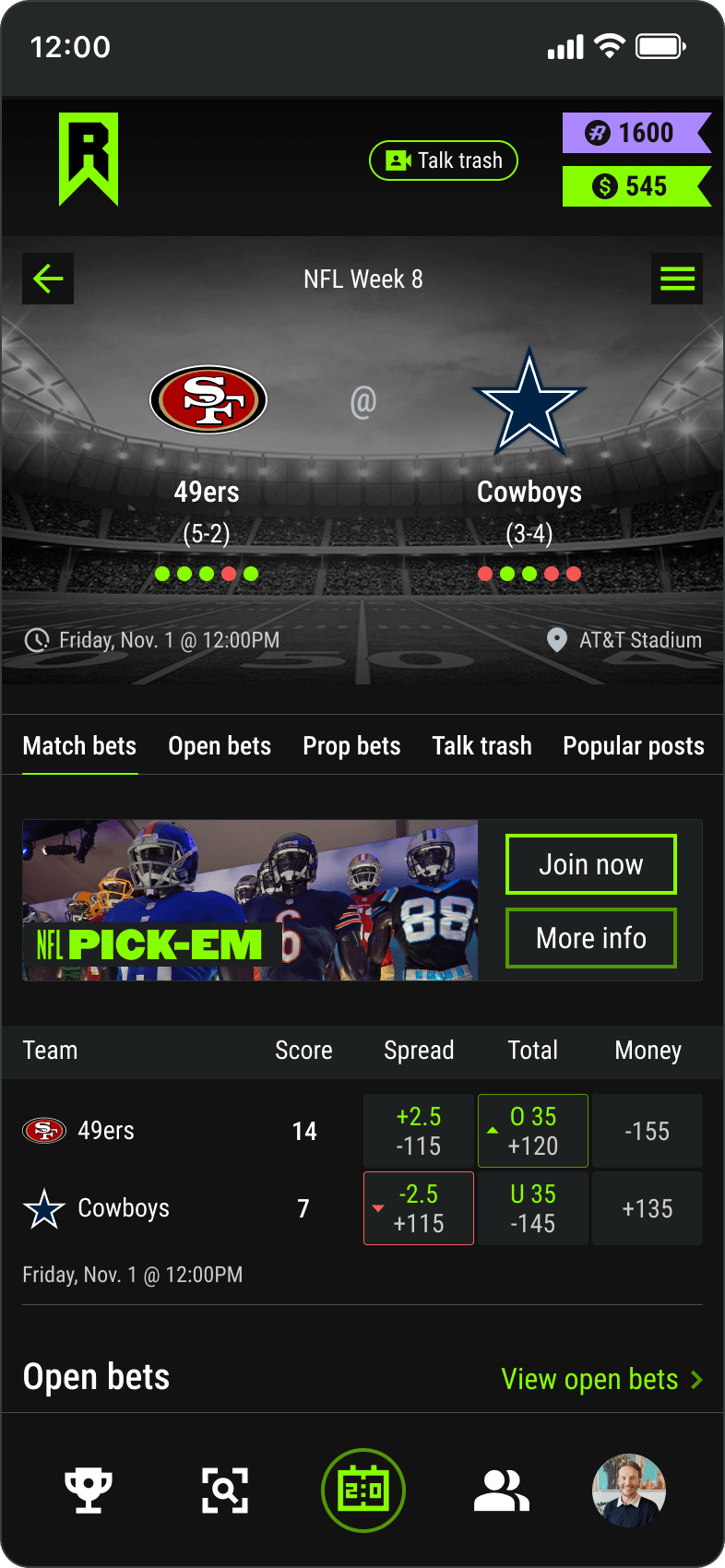
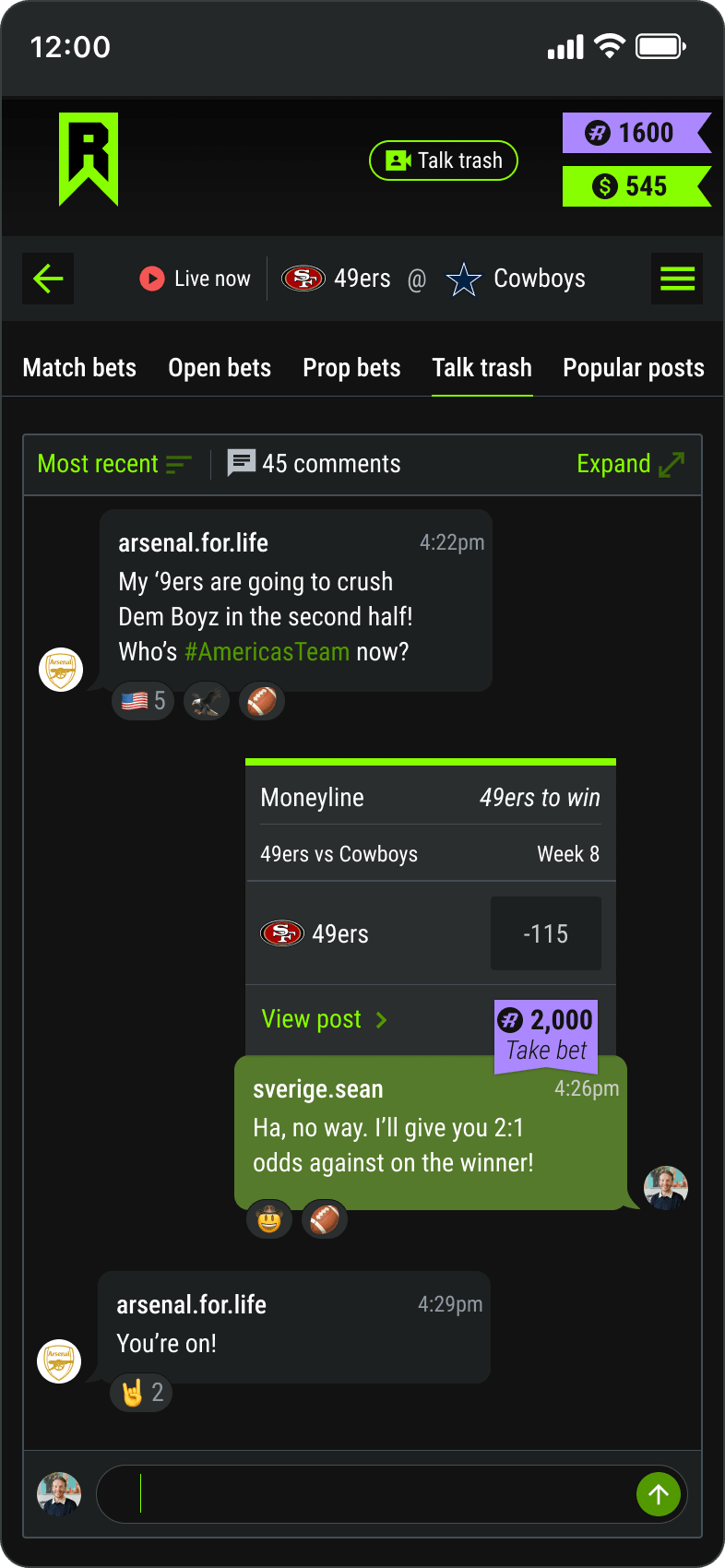
Gamification
Users earn app currency, badges, and trophies by staying active. Leaderboards encourage friendly competition and highlight top performers in each sport. This motivates repeat engagement and rewards consistent play.
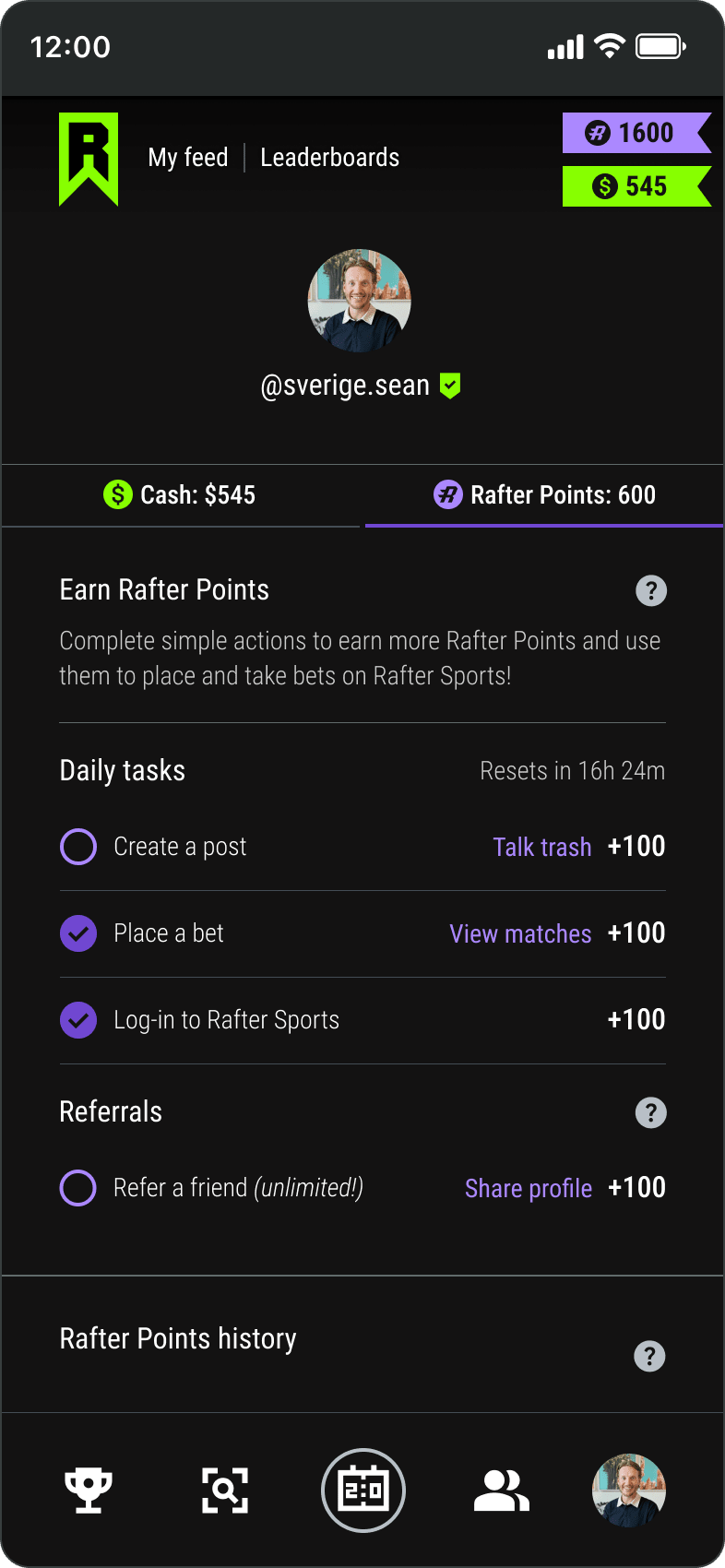
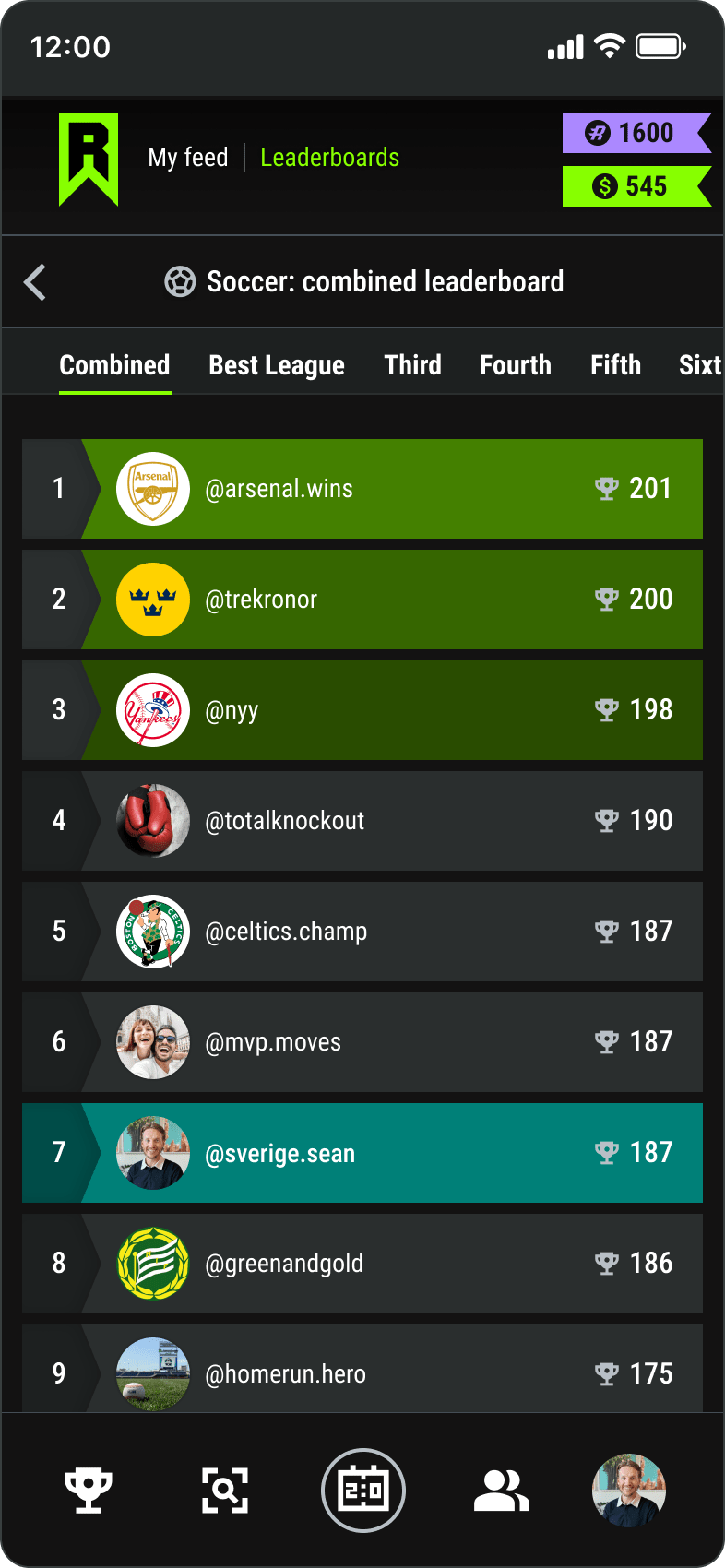
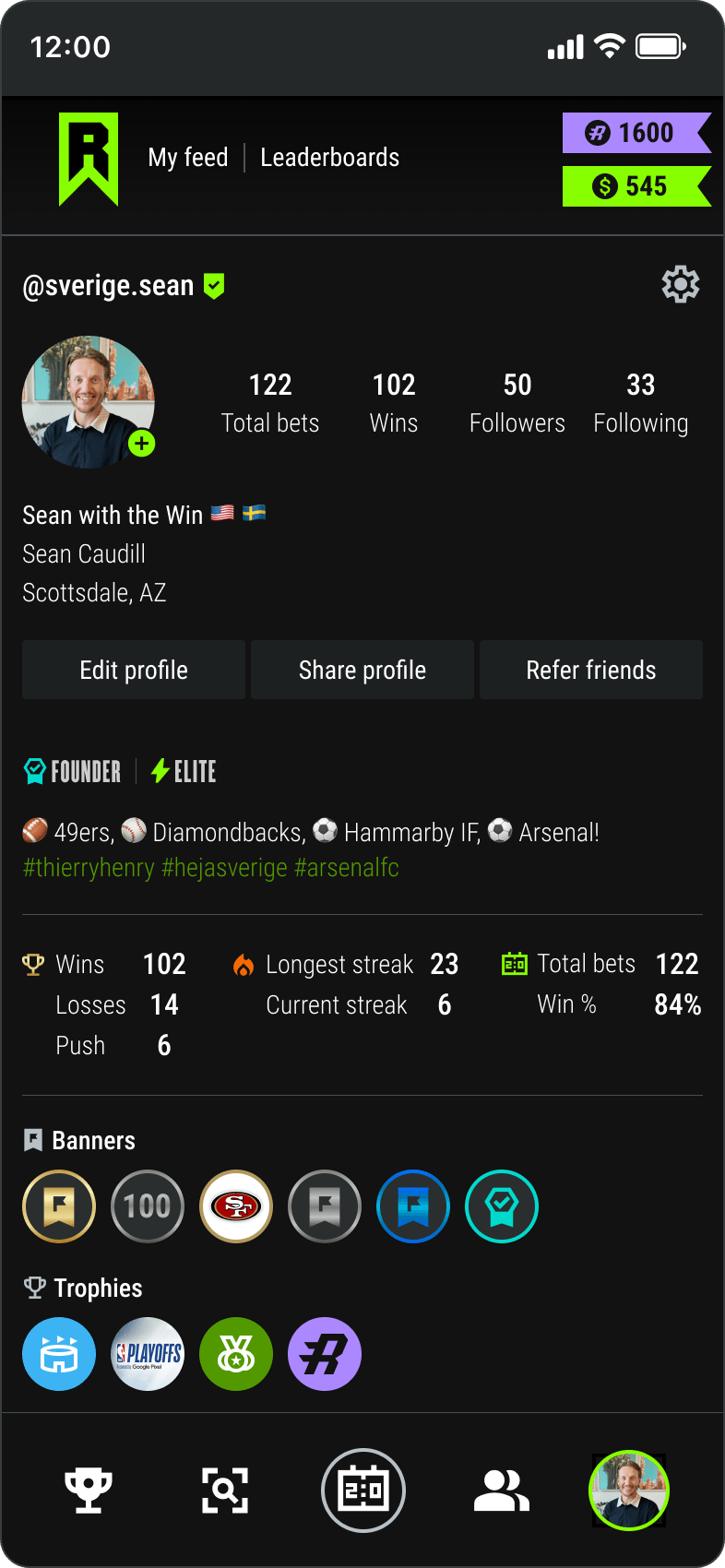
Overview
Goals
- Create a sports-forward content and betting experience tailored to real fans
- Offer video-based social features and bet creation with in-app and real currencies
- Expand appeal to a broader and more diverse user base
- Ensure compliance with state and national betting regulations
Strategy
- Use familiar video feed and social UI patterns to reduce onboarding friction
- Create a fast path to content engagement and first bet placement
- Allow for varied user types: content creators, spectators, and betters
- Design Founders Club onboarding with early-access perks
Results
200+ screens
Total designs
12 user flows
End-to-end UX
50+ assets
Design system
2 prototypes
Figma + app
UX process
Discovery
Insights were gathered through competitive analysis, feature benchmarking, and behavior reviews of comparable apps. These findings uncovered business opportunities and UX friction points.
Early design work focused on flows like onboarding, feed engagement, bet creation, leaderboards, and profile customization, which were all structured around speed, simplicity, and compliance.
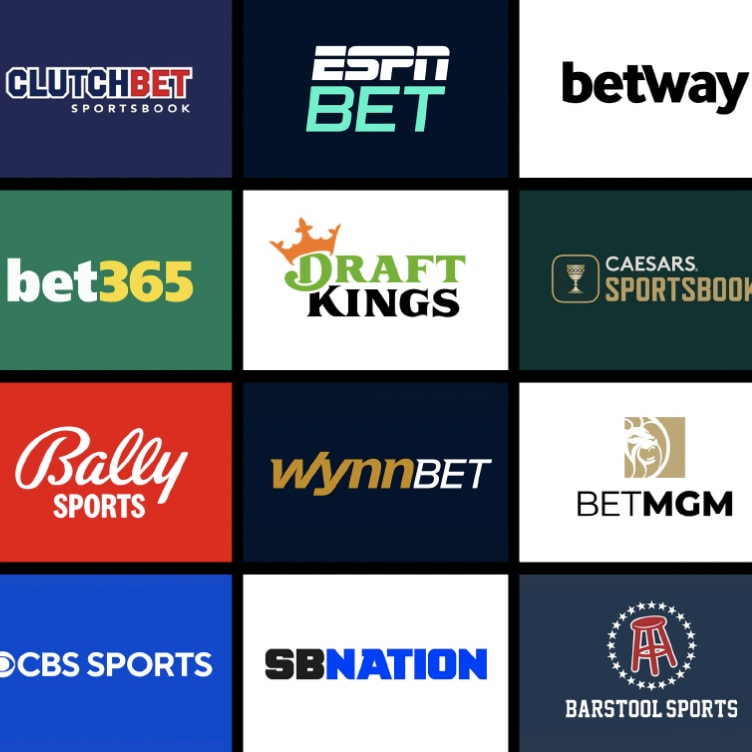
Competitor insights
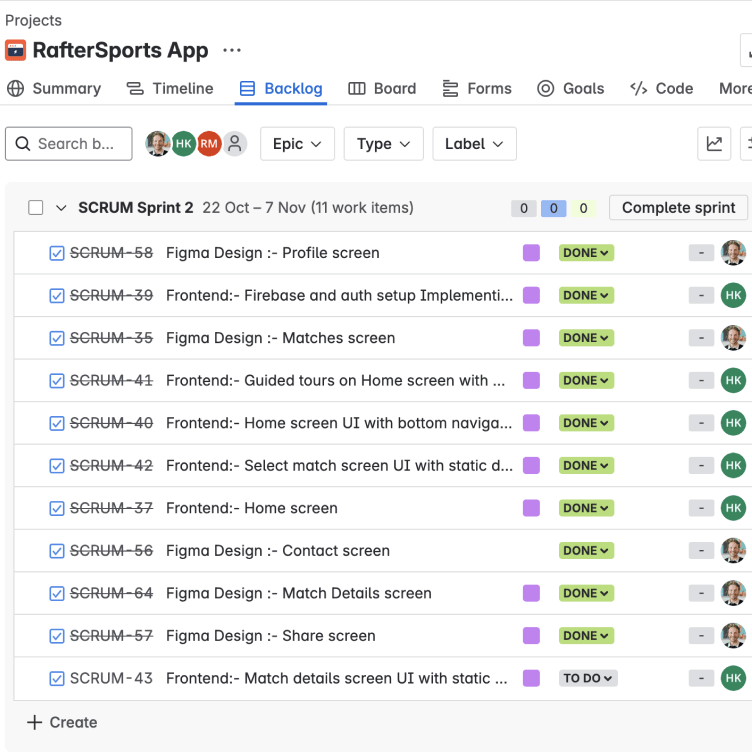
Feature planning
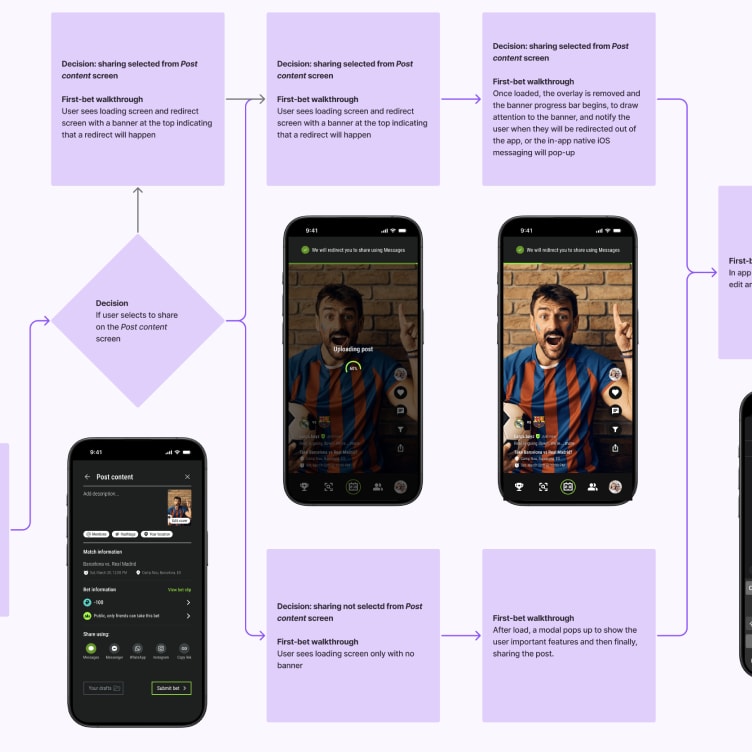
Drafting user flows
Design
Guided by Jakob's Law, the UX was designed to feel sporty, modern, and instantly familiar. Bold visuals featuring sports content and athlete imagery bring energy to the experience. The brand typography, Champion for headlines and IBM Plex Mono were incorporated in imagery, and Roboto was used as the app's text to meet accessibility standards.
A modular component library was created in Figma to support rapid iteration and visual consistency across 12 product areas. Built on atomic design principles, the system includes scalable brand styles, UI primitives, and modular components like bet cards and social posts to ensure consistency throughout the app.
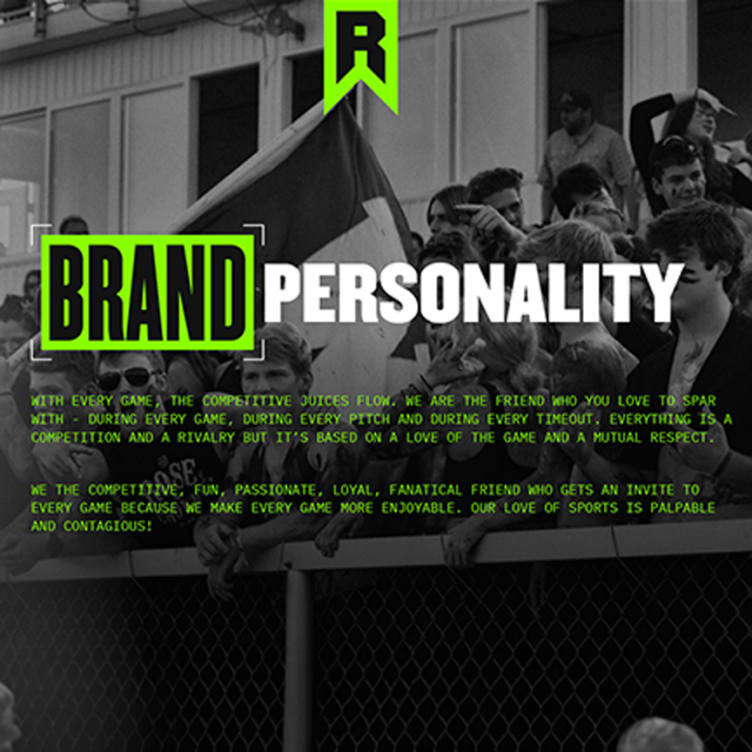
Leveraging brand assets
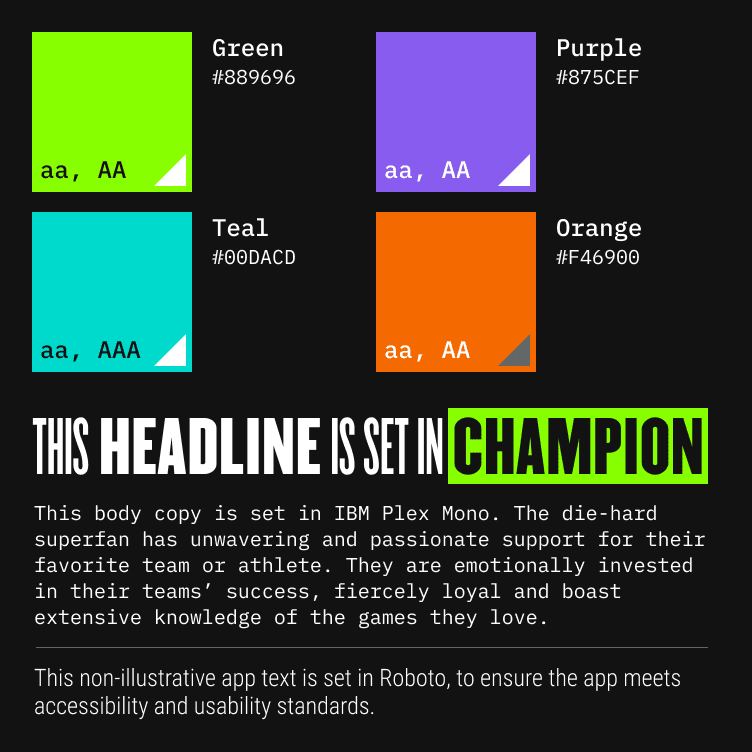
Design system foundations
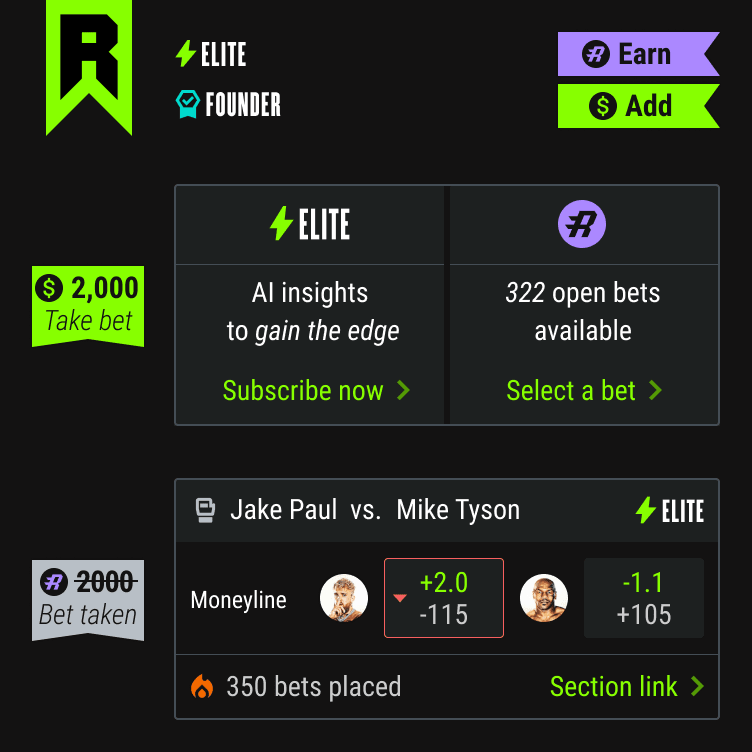
Reusable components
Prototype
A high-fidelity prototype was built in Figma and then translated into a working app prototype by the engineering team. This allowed the product team to test flows, share with investors, and begin parallel development for the final build.
Analyze
We quickly identified friction in areas like location and identity verification with internal QA and product walkthroughs. Adjustments were made in real time using Jira and Agile methods to resolve bugs and streamline flow logic before handoff.
Iterate
Feedback from stakeholders and early testers led to revised onboarding screens, improved call-to-action clarity, and more flexible privacy controls. The team operated as a global unit: product and leadership in the U.S., design in Sweden, and engineering in India.